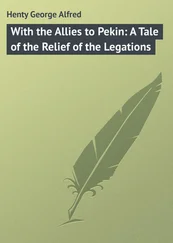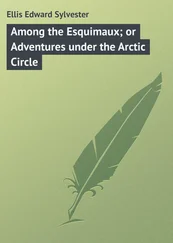Edward Ellis - Ned in the Block-House - A Tale of Early Days in the West
Здесь есть возможность читать онлайн «Edward Ellis - Ned in the Block-House - A Tale of Early Days in the West» — ознакомительный отрывок электронной книги совершенно бесплатно, а после прочтения отрывка купить полную версию. В некоторых случаях можно слушать аудио, скачать через торрент в формате fb2 и присутствует краткое содержание. ISBN: , Жанр: foreign_prose, foreign_children, на английском языке. Описание произведения, (предисловие) а так же отзывы посетителей доступны на портале библиотеки ЛибКат.
- Название:Ned in the Block-House: A Tale of Early Days in the West
- Автор:
- Жанр:
- Год:неизвестен
- ISBN:http://www.gutenberg.org/ebooks/43675
- Рейтинг книги:3 / 5. Голосов: 1
-
Избранное:Добавить в избранное
- Отзывы:
-
Ваша оценка:
- 60
- 1
- 2
- 3
- 4
- 5
Ned in the Block-House: A Tale of Early Days in the West: краткое содержание, описание и аннотация
Предлагаем к чтению аннотацию, описание, краткое содержание или предисловие (зависит от того, что написал сам автор книги «Ned in the Block-House: A Tale of Early Days in the West»). Если вы не нашли необходимую информацию о книге — напишите в комментариях, мы постараемся отыскать её.
Ned in the Block-House: A Tale of Early Days in the West — читать онлайн ознакомительный отрывок
Ниже представлен текст книги, разбитый по страницам. Система сохранения места последней прочитанной страницы, позволяет с удобством читать онлайн бесплатно книгу «Ned in the Block-House: A Tale of Early Days in the West», без необходимости каждый раз заново искать на чём Вы остановились. Поставьте закладку, и сможете в любой момент перейти на страницу, на которой закончили чтение.
Интервал:
Закладка:
Although a Shawanoe by birth (which tribe at that day had their hunting-grounds north of the Ohio), Deerfoot roamed through the forests south, and the exploits of the youth in running were told in the lodges by the camp-fires of the Shawanoe, the Wyandot, the Miami, the Delaware, and the Cherokee.
His expertness with the bow and arrow, his bravery in battle, his skill on the hunt, the fact that his mother was shot by settlers, and his father was killed in the famous Crawford expedition, caused Deerfoot to be formally ranked as a warrior when he was only fourteen years of age.
His deftness with his primitive weapons was no less remarkable than his fleetness of foot. Had he been living to-day, he would have taken the prize at the annual archery tournaments, even though he used a hickory bow instead of the double-backed yew or lancewood, and his missiles were made of the former material, with a single feather instead of the three, and were tied instead of being glued in place.
The bow and arrows of Deerfoot would have made a sorry show among those of the fair ladies and graceful gentlemen at the archery contests in these times; but those same shafts of the dusky American, with the keen flint or iron heads, had been driven by him with such prodigious force that they had found the heart of the deer or bear or bison at scarcely less than a hundred yards.
Deerfoot therefore refused to use the rifle, but clung to the bow, whose use he began studying when he was less than three years old.
As we have said, the young Shawanoe, now no more than seventeen years of age, was graceful of figure, with elastic, supple limbs, and with a perfect symmetry of frame. When he smiled, which happened now and then, he disclosed two rows of teeth as white, even, and beautiful, and free from decay, as ever existed. The nose was slightly aquiline, the eyes as black and piercing as those of a serpent, the forehead high, the cheek bones slightly prominent, the whole expression pervaded by that slight tinge of melancholy which seems to be the characteristic of the American race.
Deerfoot's costume and dress were those of the defiant warrior, who was the implacable foe of the white man. His hair, as long, black and coarse as that of a horse's mane, was gathered in a knot or scalp-lock on the crown, where it was tied and ornamented with eagle feathers, that were stained several brilliant hues; his hunting-shirt encased his sinewy arms, chest and waist, the ornamented skirt descending to his knees. The whole garment, made of buckskin obtained from the traders, was of a yellow color, the fringe being a deep crimson. Deerfoot shared the love of his people for flaring colors, as was shown by his handsomely decorated moccasins which encased his shapely feet, the various-hued fringes of his leggings, the string of bright beads around his neck, and the golden bracelet that he wore on his left wrist.
The red leathern belt, which clasped the waist of the young Shawanoe, formed a pretty contrast to the pale yellow of the hunting-shirt, and, a short distance off, would have been taken for the crimson sash worn by the civilized officer of modern times.
Behind this belt were thrust a tomahawk and hunting-knife, both keen of edge and terribly effective in the hands of the owner. The bundle of arrows was supported by a string passing around the neck, the missiles themselves resting behind the shoulder, the feathered points plainly seen by any one as they projected upward in front. In this place they were so accessible that Deerfoot, in discharging them at a foe or an animal, would have two or three in the air at the same time, there being what might be called a procession of arrows from the bow to the target, whatever it might be.
In the coldest weather, the youthful warrior gathered a heavy blanket about his shoulders, which hid all his figure, from his chin down to his twinkling moccasins. During the sultry season he occasionally threw off his hunting-shirt, except the skirt, so that arm, chest and neck were covered only by the rude figures which the mother had tattooed there by a most painful process during the days when Pa-wa-oo-pa, or Deerfoot, was a stoical papoose, tied to a flat piece of bark, and swinging in the tree branches, or lying motionless on the ground with limbs tied, and calmly watching the torturing operation with the bravery which is a part of the nature of the dusky hunters of the forest.
The bow of Deerfoot was of seasoned hickory, the string was dried sinew, and the weapon itself was all of six feet in length; so that, in discharging it, he did not hold it perpendicular, as is the rule, but in a slanting position; in short, the young Shawanoe violated more than one fundamental regulation in archery, but the fact remained that he could spit the gray squirrel on the top of the tallest oak; he could bring down the buck when leaping through the air; he had driven his sharp-pointed shaft through the shaggy body of the bison, and had brought the eagle flapping and dying to the ground when circling in the clear air far above his head.
Two years before, Deerfoot was the most vindictive enemy of the pioneers, who had slain both his father and mother. While attacking some settlers' cabins near Maysville, with nearly a score of other Shawanoes, they were surprised and almost annihilated by a party of whites led by Macaiah Preston, father of Ned. Deerfoot was wounded and taken captive. He fought like a young tiger, and the settlers, who knew his extraordinary skill and the injury he had done them, insisted on putting him to death.
But Macaiah Preston interposed, and would not permit it. He took him to his own home, and carefully nursed him back to rugged health and strength.
On the part of the good Samaritan he was assisted by his wife and Ned, who formed a strong attachment for the captive Shawanoe. The young brave more than reciprocated this friendship, the sentiment of gratitude being the most characteristic trait in his nature. He became henceforth the unfaltering ally and friend of the white race; from the bitterest enemy he was transformed into the most devoted friend, his fervency, like that of Saul of Tarsus, being as extreme as was his previous hatred.
The better to aid the settlers, Deerfoot returned to his own people, and kept up the semblance of enmity toward the pioneers. He even took part in several expeditions against them, but all proved disastrous failures to the assailants, and the youth did most effective service for those whom he had fought so fiercely a short time before.
It was of the utmost importance to Deerfoot that his true sentiments and real doings should be concealed from his people; for whenever the truth should become known to them, the most frightful death that could be conceived would be visited upon him.
The daring warrior believed his secret must be discovered; he believed he would fall a victim to their terrible vengeance sooner or later; but he was none the less faithful to the settlers. He simply resolved that he would never submit tamely to his fate; but, if the aborigines secured him for torment, it would be done by superior daring and subtlety.
Thus it was that the youthful Shawanoe was playing a most perilous and dangerous part; but he had played it so well that not until to-day had he seen just cause to believe any suspicion was afloat concerning himself.
The action of the Wyandots indicated that they preferred not to trust him with their secret. It was the first time anything of the kind had occurred, and it could not but cause uneasiness in the mind of Deerfoot.
It did not affect in the least, however, his course of action. He had set out to befriend Ned Preston and Wildblossom Brown, and it was his purpose to apprise Colonel Preston at Fort Bridgman of the danger to which his block-house was exposed.
"Deerfoot!" exclaimed Ned Preston, stepping hastily toward him and extending his hand; "I never was more glad to see you in all my life."
Читать дальшеИнтервал:
Закладка:
Похожие книги на «Ned in the Block-House: A Tale of Early Days in the West»
Представляем Вашему вниманию похожие книги на «Ned in the Block-House: A Tale of Early Days in the West» списком для выбора. Мы отобрали схожую по названию и смыслу литературу в надежде предоставить читателям больше вариантов отыскать новые, интересные, ещё непрочитанные произведения.
Обсуждение, отзывы о книге «Ned in the Block-House: A Tale of Early Days in the West» и просто собственные мнения читателей. Оставьте ваши комментарии, напишите, что Вы думаете о произведении, его смысле или главных героях. Укажите что конкретно понравилось, а что нет, и почему Вы так считаете.












![Edward Ellis - Adrift on the Pacific - A Boys [sic] Story of the Sea and its Perils](/books/753342/edward-ellis-adrift-on-the-pacific-a-boys-sic-s-thumb.webp)